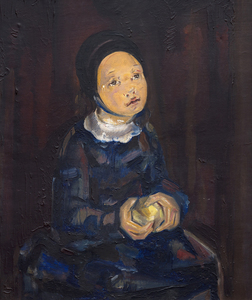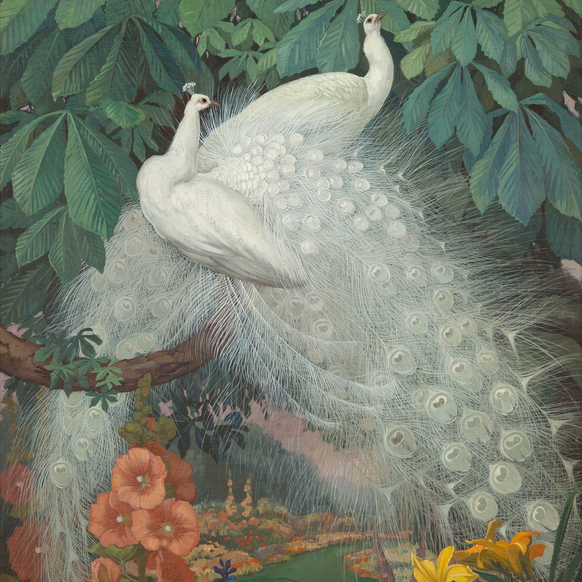MARIA BLANCHARD (1881-1932)
 The Spanish artist’s disfigured back caused her physical and emotional pain, and painting helped her express her sadness. Her family encouraged her to study in Madrid in 1903. Six years later, she won a grant to attend the Academie Vitti in Paris, where she met the painter Juan Gris and was introduced to the work of Picasso, Lipchitz, Braque, and others. She adopted the cubist style, which breaks down, analyzes, and reassembles objects in an abstract but recognizable form. At the time, the style was transforming European painting and sculpture, and it became the most influential art movement of the 20th century.
The Spanish artist’s disfigured back caused her physical and emotional pain, and painting helped her express her sadness. Her family encouraged her to study in Madrid in 1903. Six years later, she won a grant to attend the Academie Vitti in Paris, where she met the painter Juan Gris and was introduced to the work of Picasso, Lipchitz, Braque, and others. She adopted the cubist style, which breaks down, analyzes, and reassembles objects in an abstract but recognizable form. At the time, the style was transforming European painting and sculpture, and it became the most influential art movement of the 20th century.
With Gris’ mentorship and companionship, and the help of dealer Léonce Rosenberg, Blanchard found commercial success, with demand for her work peaking in the wake of the 1921 Salon des Indépendants exhibition in Paris. However, the economic crisis that followed in the next few years caused collectors to stop buying her work. Blanchard relied on a friend for financial support, although she continued painting, often infusing religious content, acknowledging her mortality. Eventually, the debilitating effects of tuberculosis forced her to stop working. Blanchard died in 1932.
Blanchard’s compositions reveal poignant connections with her tragic life, and her style positioned her among the top of the early 20th century avant-garde. Her works appear in the collections of the Museo Nacional Centro de Arte Reina Sofía in Madrid, Hood Museum of Art in New Hampshire, and the Courtauld Institute of Art in London.



